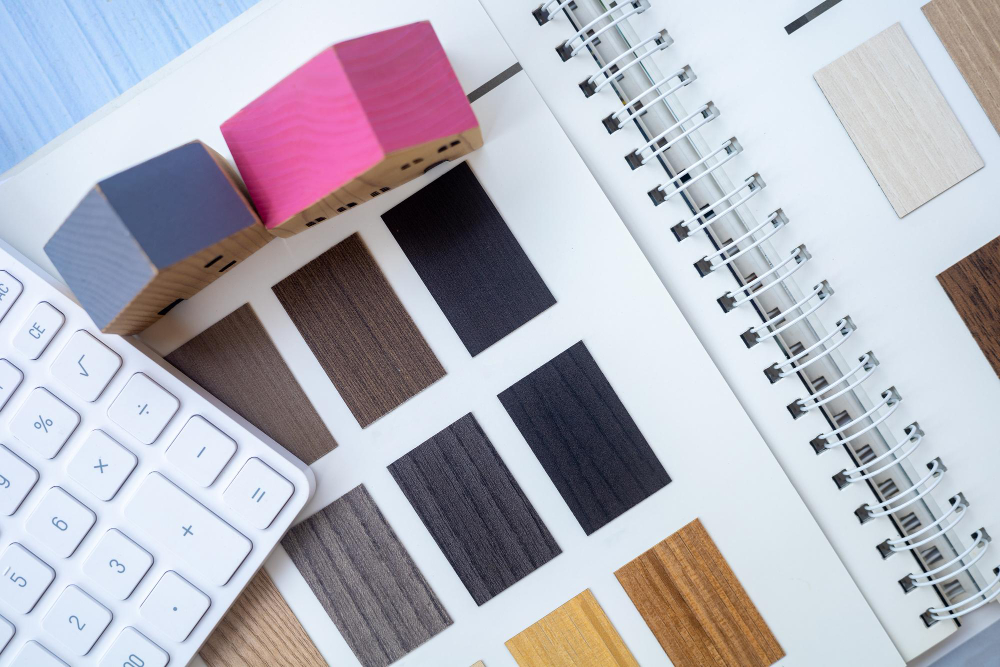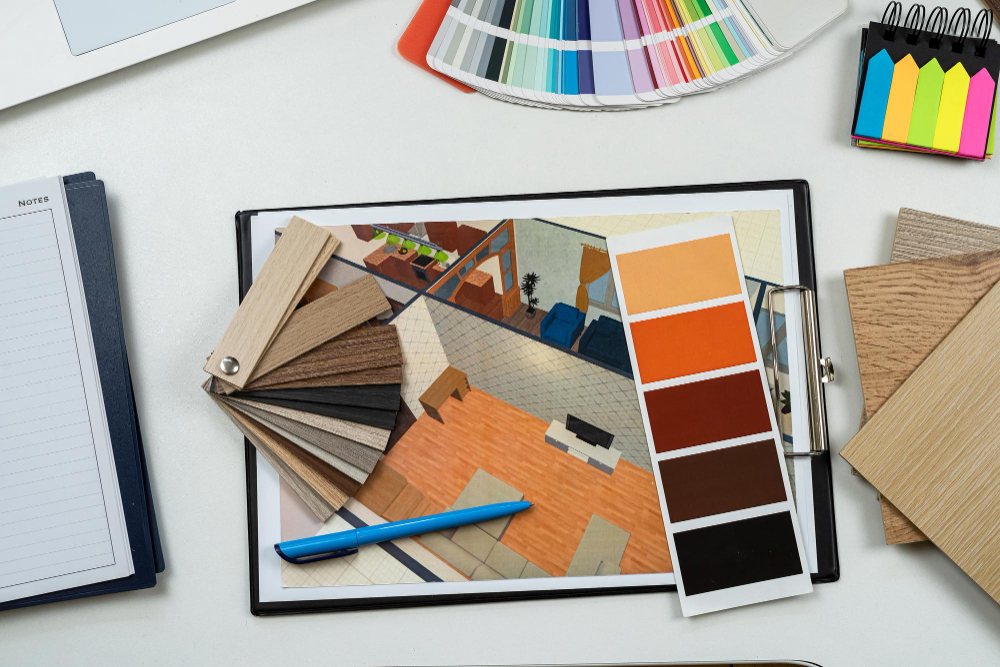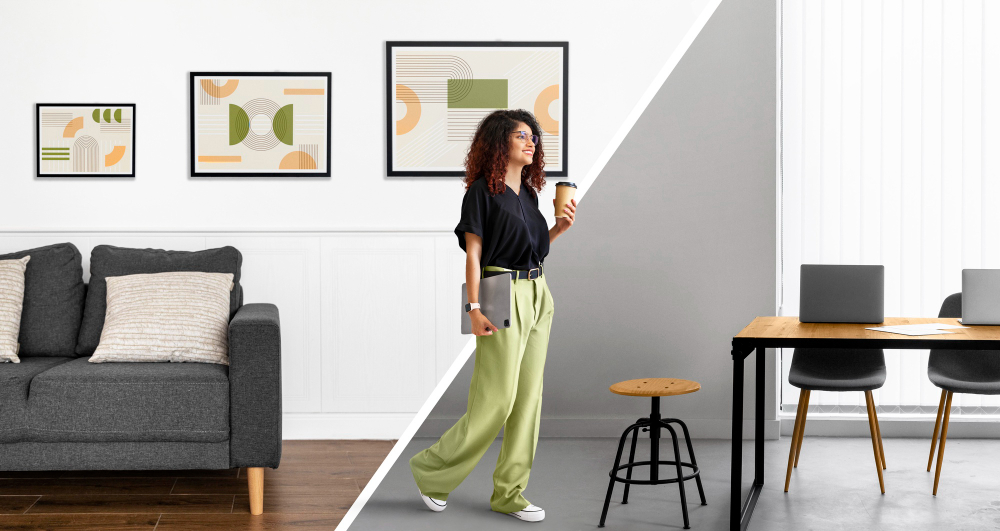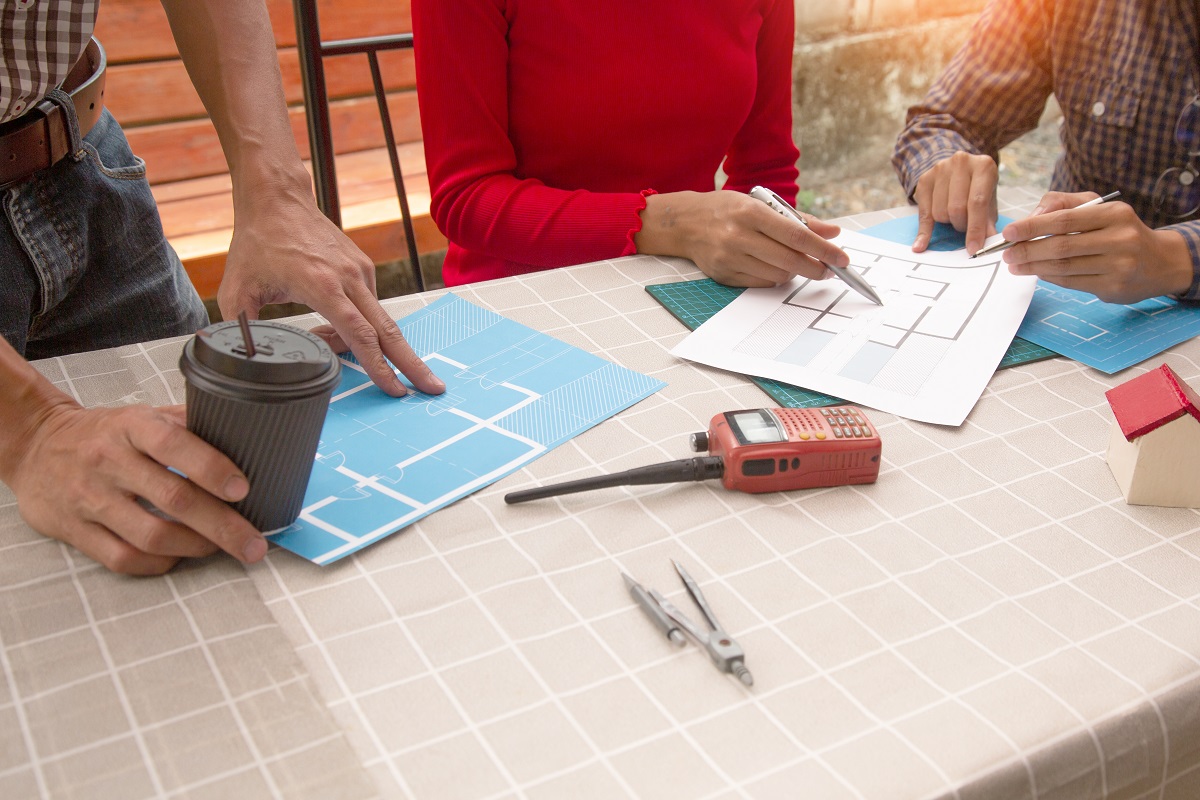Understanding Colour Palettes in Interior Design
Why Do Colours Matter in Interior Design?
Colours can reveal a lot; beyond design and aesthetics. Colours can convey feelings, and emotions and can talk a lot about personality and character as well. In interior design, colour schemes and colour palettes play a pivotal role. A decorated and designed room may seem incomplete or poorly done if it does not have the right colours applied to it. Choosing colours for a space is quite subjective. It varies from person to person and their personal preferences. In this article, we will dive into knowing what a colour palette is, its significance and how it is influential in the interior design industry.
What is a Colour Palette?
A colour palette is an amalgamation of colours that is used for design. It usually includes a set of primary colours, secondary colours and tertiary colours. They also may include colours that are called analogous and complementary colours. In Interior design, colour palettes or colour schemes are used to make spaces look aesthetically pleasing and beautiful. As mentioned earlier, this concept is subjective and a professional interior designer is required to choose palettes and colour schemes according to their client’s requirements. Most interior spaces we see today convey a particular feeling or emotion and that is the space’s colour and aesthetic talking to us.
Read Also: Sustainable and Stylish: Incorporating Eco-Friendly Practices in Interior Design Courses
The Significance of Colour Palettes
Source: The Importance of Colour Psychology by Poly Begum
- Augmenting Spatial Perception
Do you want free career counseling?
Ignite Your Ambitions- Seize the Opportunity for a Free Career Counseling Session.
- 30+ Years in Education
- 250+ Faculties
- 30K+ Alumni Network
- 10th in World Ranking
- 1000+ Celebrity
- 120+ Countries Students Enrolled
This is a generally followed practice – lighter colours make a space look more large and spacious and darker colours make a space look more cozy and maybe a little compact. Choosing colours in this regard sets the tone for how the space is perceived. Certain colours can also bring out architectural features, help bring in more light by making it look bright (mostly lighter colours) and can make the space look visually interesting.
- Setting The Tone, Mood and Atmosphere
Colours can make or break aesthetics; if the right colour is not chosen for a space, the interior design of the room may not be successful. Not all colours work similarly for all spaces. For Instance, an ice cream store that goes by the branding of including fruits and all things natural would go with vibrant colours that remind you of fresh fruits and even fruit smells. A clothing store with the brand identity of being young, cheerful and peppy would go for yellow preferably, which denotes cheerfulness, happiness and upliftment.
- Reflection of One’s Personality and Style
Colours have the capability of influencing and conveying emotions, they can make you feel a certain way based on the shade or tone. It is imperative for interior designers to understand the impact of colour psychology on human behaviour. Clients who ask for light and earthy tones, associate more with calmness and tranquility. If someone prefers shades of, for instance, purple – that would ideally denote creativity, spirituality and luxury.
Book Now →
- Achieving Cohesion
Now, very random colours do not make a lot of sense; it can seem confusing and all over the place. The colours used in a space must go well together and have to complete each other. It is best to choose shades, tones and colours that are from the same group in a palette or a colour scheme. The idea is to make sure that spaces do not look crowded or cluttered.
The Psychology of Colours
It has been studied and proven that colours have a major influence on human behaviour. Different colours can evoke different emotions. We are going to take a look at the psychology of some of the colours or shades that are commonly used and seen.
- Red
Red is a colour that evokes a sense of energy, passion and excitement. It is, however, best used as an accent colour (shades used for finishing touches) as it can appear too strong and overwhelming if used a lot.
Do you want free career counseling?
Ignite Your Ambitions- Seize the Opportunity for a Free Career Counseling Session.Read Also: Corporate Interior Design | Definition, Steps, Salary
- Yellow
Yellow is often associated with happy feelings, sunshine, being or feeling lucky and cheerful. It is also used to grab attention with regard to its usage in signs and warning signals. The colour may seem too jarring or negative when used extensively.
- Green
Green is a colour that is calm for the eyes and is associated with nature and trees. It also is a colour that evokes a sense of health and well-being. It also symbolizes abundance, rest, peace and refreshment.
- Blue
The colour blue can evoke various emotions based on its different shades or tones. It can symbolize Calmness, serenity, tranquillity, peace and a sense of security. Lighter shades of blue can make space look larger with a lot more room than it already holds.
- White
White is a colour that symbolizes innocence, peace and purity. However, this perception is subjective as the colour white can also evoke a sense of emptiness; a lot of white can also seem overwhelming and extremely bright for a lot of people. Shades of white used accurately can also make a space look more stylish.
- Pink
Pink usually stands for kindness, love and nurturing. It also denotes a sense of joyfulness and mostly is used for kids’ rooms. It is also often used as the colour of romance, along with red.
Read Also: Top 10 Interior Designers in India & Interior Design Courses Outlook

Tips For Choosing The Right Colour Palette
- Setting a Focal Point
A focal point in interior design could be artwork, furnishing, or even rugs. Framing your colour approach around these focal points can help create a sense of togetherness between the colours and decor items. This ensures that there is a sense of cohesion in the interior design.
- The 60-30-10 Rule
The 60-30-10 rule is a design principle that means: 60% of a dominant colour, 30% of a secondary colour and 10% of an accent colour. This principle ensures that a balance is maintained.
Read Also: 10 Important Elements of Contemporary Interior Design
- The Importance of Lighting
Colours and lighting in a space go hand in hand. While lighting can enhance spaces, lighter shades can make a space look brighter. A professional interior designer must test different colours under different lightings and choose the best colour.
- Usage of Colour Theory
An interior designer must be aware of colour concepts, colour response and colour theories. They must choose the right shade based on: Complementary colours that are on the opposite sides of a palette, Analogous colours that are next to each other and Triadic colours that are evenly placed on the palette.
Conclusion
A proficient interior designer must be aware of how colours can impact human behaviours and physical space. An interior designer creates magic with colours that transform interiors. By knowing, understanding and applying colour psychology, an interior designer can grow in their career. Irrespective of the preferences you have, colours can cater to all of them.

AAFT has been providing the world with limitless creativity and expression since 1993! Through a dynamic and industry-driven curriculum, AAFT provides engaging and captivating articles to persuasive blogs and empowers its readers to explore diverse avenues of creative media education-related content.






